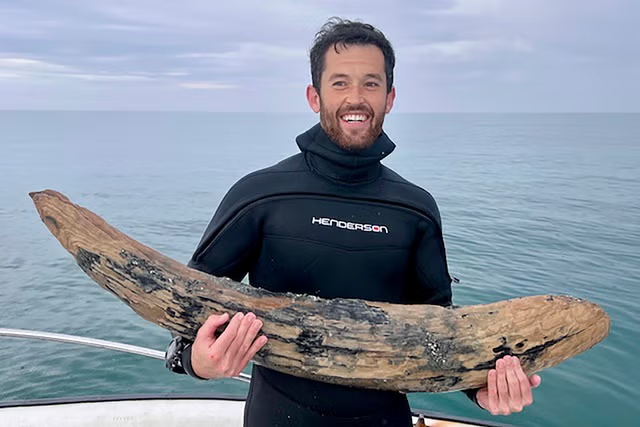An innovative technique used in a study of Neanderthal hearths—places where fires were created—has been described by researchers as a "major" development in archaeology, one that could help shed light on prehistoric humans' behavior.
For a study published in the journal Nature, an interdisciplinary team of researchers found that a series of six Neanderthal hearths at El Salt, a Paleolithic site in Spain, were formed over at least 200 to 240 years, with each one likely having been created decades apart.
The findings are significant because determining the timescale of human activity in the Paleolithic period, also known as the Old Stone Age, has long been one of the most challenging problems in prehistoric archaeology. (This period in human prehistory extends from the earliest use of stone tools more than 3 million years ago to around 12,000 years ago.)
Resolving the timescale of such activity is difficult largely because of the limitations of dating techniques. For example, radiocarbon techniques cannot date samples that are older than around 50,000 to 60,000 years. Meanwhile, other techniques can produce errors of several thousand years.
"Although it has been proposed that Paleolithic hunter-gatherers were highly mobile, key aspects of their lifestyle, such as the time between camps and the size of traveling groups, remain unclear," the study's authors wrote. "Complexity in the formation of Paleolithic sites makes it difficult to single out human occupation episodes and resolve the time between them."
In the latest study, the research team—led by Ángela Herrejón-Lagunilla of Spain's University of Burgos—attempted to address this problem by examining hearths at El Salt, dated to around 52,000 years ago, with an innovative technique.
The technique involved a combination of "archaeostratigraphic" analyses—which helped the team determine the order the hearths were created in, based on their relative position in the ground layers—and an approach known as archaeomagnetic dating.
This technique studies and interprets signatures of the Earth's past magnetic field as recorded in burned archaeological remains. The approach works, given that burnt materials hold a record of the direction and/or intensity of the magnetic field at the time of the last fire.
The combination of the two approaches revealed that the Neanderthal hearths at El Salt were created decades or even up to a century apart—a finding that sheds light on the behavior of these early humans, who went extinct around 40,000 years ago. The results provide an indication of the timing of the hearths in unprecedented resolution.
"When we excavate archaeological settlement areas, we assume that they are the result of many events of human activity, but until now we did not know exactly how much time had passed between these activities. We did not know whether it was decades, centuries or thousands of years," said Santiago Sossa-Ríos, a researcher in prehistory, archaeology and ancient history at Spain's University of Valencia and an author on the study, in a press release.
"From there, within this temporary framework, we can open up new lines of investigation to study, for example, patterns of mobility, technological change or differences in the use of space," he continued. "The time is there, the challenge lies in combining and extracting everything that the methods offer us to uncover it."
Hearths can yield useful information about Neanderthal life because they are good indicators of occupation within a given site.
The new findings indicate that while Neanderthals were highly mobile, in some cases they may have returned to previous settlements after lengthy periods but still within the space of individual lifetimes.
In Paleolithic archaeology, a discipline in which human behavior is usually studied on long timescales typical of geological processes, being able to observe changes on timescales closer to a human lifespan is a significant development.
As a result, the techniques employed in the study could help to shed light on Paleolithic hunter-gatherers. They could even be applied to other archaeological contexts to resolve the timings of human activity.
"It is definitely a major step forward in archaeology, which will help us to better understand human behavior in the past," the study's authors said in the press release.
Do you have a tip on a science story that Newsweek should be covering? Do you have a question about archaeology? Let us know via science@newsweek.com.
Disclaimer: The copyright of this article belongs to the original author. Reposting this article is solely for the purpose of information dissemination and does not constitute any investment advice. If there is any infringement, please contact us immediately. We will make corrections or deletions as necessary. Thank you.



